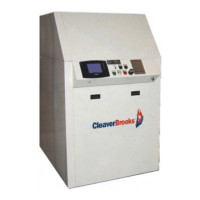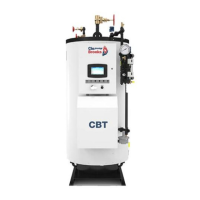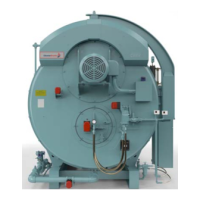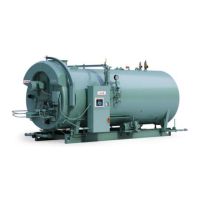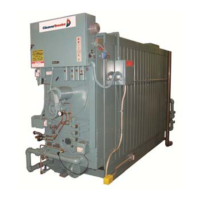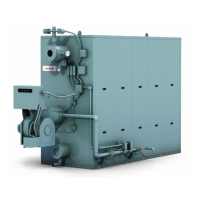CB FALCON
750-265 52
Analog Modulation Parameters
These parameters are used only when 4-20mA or 0-10V is selected for modulation output.
PWM frequency 1000Hz, 2000Hz, 3000Hz, 4000Hz,
This parameter provides the frequency used by the PWM output to control the fan.
Pulses per revolution 0-10
Typically is the number of sensors that the fan contains.
Fan gain up 0-100
This is the gain for speeding up the fan.
Fan gain down 0-100
This is the gain for slowing down the fan.
Speed up ramp RPM per second
Whenever the burner is firing, the fan will be commanded to increase its RPM no faster than
the rate provided by this parameter.
Slow down ramp RPM per second
Whenever the burner is firing, the fan will be commanded to decrease its RPM no faster than
the rate provided by this parameter.
Fan min duty cycle duty%
The fan modulation output will never send a duty cycle lower than this threshold, except for a
0% duty cycle to turn the fan off.
This can be used to limit the minimum PWM to a level that prevents stalling of the fan.
Table 28. Fan Speed Modulation Parameters.
Parameter Comment
Analog output hysteresis n
This parameter adjusts the amount of hysteresis applied to the PID output when a non-PWM
modulation is selected. The “n” value determines how much the PID is required to change in
a new direction before the output will change.
This is somewhat experimental, although simulation shows this technique provides better
response and also better control of motor reversals than a deadband.
A typical range is 0 (disabled) to 10, although higher values are allowed. The amount of PID
change required to change direction is computed as:
n/10 * Pgain * P scaler
Background: The granularity of temperature measurement in the Falcon is 0.1C, which is
represented internally as an integer (e.g. C * 10). Thus if the temperature changes by the
smallest measurable amount (e.g. 1 count), the P term of the PID output will contribute a
change of 1*Pgain * P scaler, to the total PID output. The parameter thus allows some
fraction of this change to be the threshold for changing direction, e.g. “n” = 5 means0.5 or half
of this amount of change would be needed to change direction. If the Igain is zero then using
any value of “n” less than 10 makes no difference; however when Igain is non-zero it also
contributes to the PID output, so smaller amounts of hysteresis make sense. Experimentally,
values of between 5 to 10 seem to work well.
Table 27. Fan Speed Modulation Parameters. (Continued)
Parameter Comment
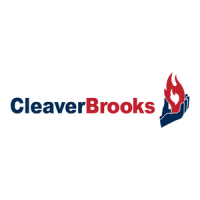
